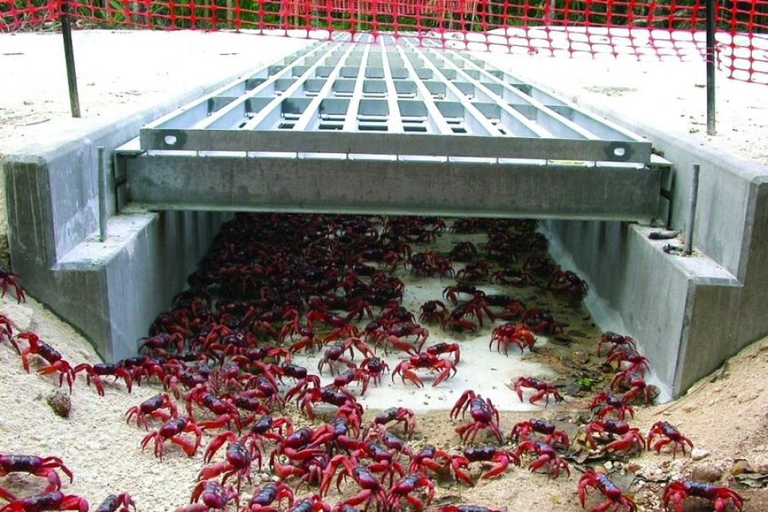
Niseko, Toya-Usu and Shiraoi are three Hokkaido destinations for travellers who want to feel close to the communities they’re visiting.
In order to allow wildlife to safely move, man created “nature highways”. Here are the best.
Animals once roamed the whole world, as a unique, limitless reserve ruled only by nature. Then, humans arrived and natural spaces started fragmenting, relegating some species and interrupting connections among different areas.
Such connections are essential to species using large ranges, such as predators and large mammals. Yet, these wide areas have been interrupted by urbanisation. In order to fix human-related damages, wildlife corridors have been created all over the world, i.e. the restoration of interconnected habitats, which allow fauna relocation and vegetable species genetic exchange. Here are some of the most effective “nature highways”.
The Terai Arc Landscape (TAL), established thanks to the cooperation between the WWF and the Nepalese government, is a narrow subtropical wildlife corridor between India and Nepal, crossing 11 protected areas. Grasslands, forests, and river valleys are home to rare and threatened species, such as the Asian elephant (Elephas maximus), the Indian rhinoceros (Rhinoceros unicornis), and the Bengal tiger (Panthera tigris tigris).
Banff National Park, Canada, is home to bizarre bridges specifically created for animals. The passages, 10 to 60 metres wide and covered by local greenery, aim to induce animals, such as deer, moose, and bears, to cross the bridges rather than the heavily-trafficked Trans-Canada Highway. To date, conservationists have documented more than 140,000 animals crossing the highway using either the bridges or the underpasses.
Not all wildlife corridors are designed for large mammals. Christmas Island, Australia, is home to the extraordinary annual red crab (Gecarcoidea natalis) crossing. Shellfish live in the island’s forests, but they annually migrate to the ocean to breed and lay their eggs. In order to protect crabs from vehicles, the park staff built bridges and tunnels.
Oslo, Norway, is home to the world’s first highway designed for bees. The city doesn’t have enough urban parks, which means a reduced amount of plants that pollinators, like bees, need to survive and thrive. All citizens are called to contribute by planting flowers, plants, and by creating houses for insects, in order to provide them with shelter and food along city’ arteries.
This wild, natural strip extends for over 8,500 kilometres, from Finland to Greece. The idea of the European Green Belt came up in Germany, shortly after the fall of the Berlin Wall. The corridor is located where the Iron Curtain used to be. Indeed, this wildlife corridor has an historical and cultural value. This area, after removing wire fence and landmines, represents an inestimable ecological area, boasting forests, natural parks, connecting the Baltic Sea to the Adriatic Sea.
Siamo anche su WhatsApp. Segui il canale ufficiale LifeGate per restare aggiornata, aggiornato sulle ultime notizie e sulle nostre attività.
![]()
Quest'opera è distribuita con Licenza Creative Commons Attribuzione - Non commerciale - Non opere derivate 4.0 Internazionale.
Niseko, Toya-Usu and Shiraoi are three Hokkaido destinations for travellers who want to feel close to the communities they’re visiting.
We talked to World Happiness Summit organiser Karen Guggenheim about the connection between the planet’s health and our happiness.
The new generation of high-performance wood materials offers unexpected hi-tech possibilities to the worlds of design and architecture.
A group of experts in Tokyo suggested pouring radioactive water from Fukushima into the open sea. A marine biochemist explains the consequences of this absurd decision.
By recovering clothes discarded in the West, Togolese designer Amah Ayiv gives them new life through his high fashion creations.
All catwalks in July will be broadcast online: after Paris, it’s Milan Digital Fashion Week’s turn. And the biggest beneficiary is the environment.
Disabled travellers need not fear Japan. Accessible Japan founder Josh Grisdale tells us about his commitment to opening the country’s doors to everyone.
Kalongo Hospital in Uganda is on high alert. Medics are facing the pandemic amid an already precarious healthcare situation, in a country with only 55 intensive care beds.
Indigenous peoples in the isolated region are suffering from poor access to health, with several cities becoming hotspots of coronavirus in the Amazon. Indigenous leaders, health experts and NGOs are calling for international help.









